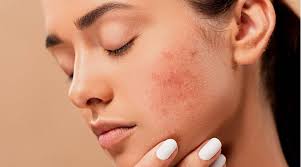During a professional facial, the facial mask is applied after cleansing, skin analysis, exfoliation, extractions, and massage. Facial masks treat your particular skin type or condition, whether it’s dry, dehydrated, sensitive, red, or oily.
Facial masks generally stay on your skin for 10 to 15 minutes and contain ingredients like clay, black moor mud, aloe vera, seaweed, algae, essential oils, massage oils, herbs, and vitamins. After the mask has done its work, the esthetician removes it and completes the facial with an application of toner, serum, moisturizer, eye cream, lip balm, and if it’s day-time, sunscreen.
One sign of a good facial is when the esthetician stays in the room with you during the facial mask, giving you a scalp massage or some other service that enhances your experience. However, whether you prefer to do it in the salon or make your own facial mask at home, getting a facial mask can go a long way to improving the overall health of your skin.
Benefits of Facial Masks at the Spa
A face mask is intended to treat your particular skin condition, so it’s important to choose the right one for you. If you’re using a professional skin care line, your esthetician can usually recommend a facial mask for you to use at home, but some are only available for professional use.
Watch Now: The Basics of Spa Facial Masks
Depending on their ingredients, masks can tighten and tone, hydrate, nourish, draw out impurities, help blemishes heal, calm and soothe, or rejuvenate the skin—or any combination thereof. Additionally, there are several types of masks including clay, cream, setting, and gel varieties, each of which offers its own unique benefits.
Clay masks, which contain clay, kaolin, or bentonite for their tightening and sebum-absorbing effects, help draw oil and dirt to the surface of the skin. Meanwhile, cream masks or gel masks are formulated to hydrate and nourish the skin. On the other hand, setting masks harden into a rubbery state before the esthetician peels them off.
The benefit of going to the spa or salon for these treatments is that you can talk through each product with your esthetician before you commit to one. Additionally, licensed massage therapists and experienced estheticians know plenty of tricks to help reduce the pain associated with some of these procedures.
At-Home Solutions That Still Work
open next page to continue reading….




